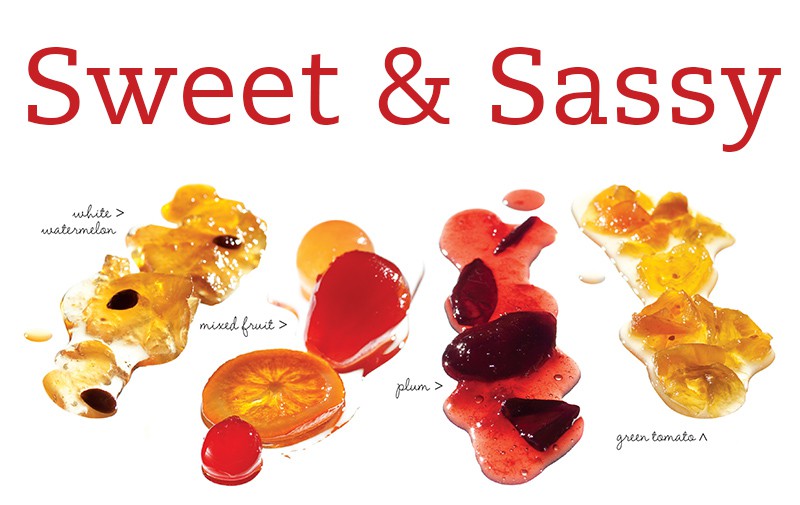
Mostarda, the glistening candied fruit spiked with mustard oil that Italians typically serve with boiled meat, has a new job description. On stylish tables in northern Italy, it now accompanies the cheese course, a novel pairing for this country steeped in culinary tradition. Robiola with melon mostarda. Parmigiano-Reggiano with pear mostarda. Gorgonzola with fig mostarda. These fresh ideas for a condiment with ancient beginnings inspire Paola Calciolari, a Mantua native whose 20-year-old company, Le Tamerici, produces hand-crafted mostarda from local fruits.
Calciolari remembers, as a child, washing the fruit for her grandmother’s mostarda in the family’s courtyard. For generations, locals had preserved their harvest—plums, green tomatoes, pears, crab apples, melons, and winter squash—by candying the sliced fruits in thick sugar syrup. Mustard oil, with its antibacterial properties, added extra protection and a sharp pungency that cut the richness of fatty foods. In the old days, when rural women like Calciolari’s grandmother made their own mostarda, they would work by an open window because the oil’s volatile fumes could burn the eyes and lungs. At Le Tamerici, workers don goggles, a heavy apron, and two pairs of gloves before adding the oil to the cold, syrupy fruit.
The distilled oil used for mostarda isn’t the same as the mustard oil used in Indian cooking. The former has a far higher concentration of allyl isothiocyanate, the compound that burns. In Italy, one buys mustard oil in a pharmacy, from white-jacketed clerks who dispense it by the drop. (It is illegal to sell over the counter in the United States.)
“Quante goccie (how many drops)?” asked the clerk when I stopped by a Mantua pharmacy after my visit to Le Tamerici. She put my 50 drops (the minimum) in a tiny stoppered bottle, and when I got back to my hotel, I wrapped the precious container in bubble wrap and put it in the cosmetic bag in my luggage. Within a day, all of my clothes smelled of mustard.
I got the hazmat home successfully, but I have yet to tackle homemade mostarda. Ten drops per kilo of fruit is the proper ratio, according to Calciolari, who prepares her mostarda in the Mantua style, with peeled and sliced fruit of a single type. In Modena, the preference is for mixed fruits, preserved whole, while Venetian mostarda is made with mixed-fruit puree. Until I can assemble my hazmat suit, I am experimenting with the lovely mostarde (that’s the plural) from Casa Forcello, the brand name for the Tamerici products in the U.S.
Some of Paola’s favorites pairings:
blue: (Gorgonzola, Stichelton, Roquefort) + fig or mandarin orange mostarda
firm aged: (Grana Padano, Parmigiano-Reggiano) + plum mostarda
soft or semisoft: (Robiola, Brie, Taleggio) + melon mostarda
pressed: (Fontina, Asiago) + green tomato or winter squash mostarda





